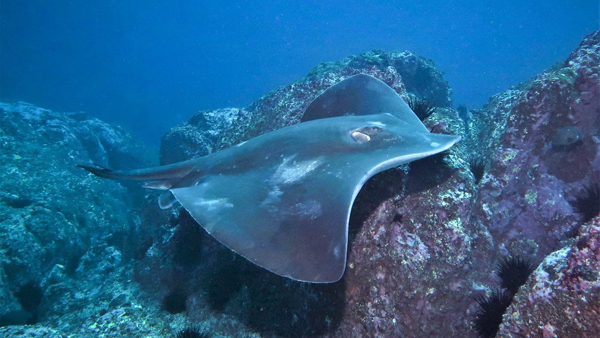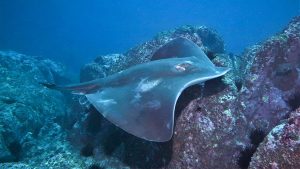
Located off the coast of Narooma, NSW, Montague Island has a rich history, with evidence of Indigenous occupation dating back thousands of years. European explorers first visited the island in the late 18th century, and it was used for a variety of purposes including a whaling station and a lighthouse. Now managed by New South Wales National Parks and Wildlife Service, the island is a protected nature reserve and famous for its significant colony of Australian fur seals. Weighing up to 360kg and hence being the largest seals in the southern hemisphere, these playful and curious creatures are known for their friendly nature and love to interact with divers.

As with many other seal species, Australian fur seals were hunted heavily for their fur during the 19th and early 20th centuries, which greatly reduced their populations. Today, they are protected by law in Australia and are considered a conservation success story, with populations rebounding in many areas.
It was early April and we decided it was now time to check out this renowned diving spot and see the seals for ourselves. We arrived early in Narooma to set up our trip to Montague Island. After certification checking and a briefing, we were our way out through the bar. The boat chugged along until we saw the waves. At this point the captain revved the boat, and it flew through the bar to start our 10-minute journey to the island.

On arrival in a calm bay at the north of the island, we donned our scuba gear and jumped into the crystal-clear water. The temperature was a lovely 23 degrees, very comfortable for a semi dry suit. The visibility was good enough to allow us to see the seals up close and personal. The seals are not afraid of humans and will often swim right up to divers, making for some incredible photo opportunities. Australian fur seals are known for their thick, waterproof fur, which helps them to stay warm in the cold waters of the Southern Ocean. They are also excellent swimmers and can dive to depths of up to 200 meters in search of food, which includes fish, squid, and octopus.
We were also lucky enough to see many baby seal pups. These adorable creatures are born in late November and early December. The baby seals at Montague Island are incredibly cute and playful. They spend most of their time on the rocky shores of the island, where they learn to swim and hunt for food. As they grow, they become more adventurous and will often slip into the water to play with divers and snorkelers.
Apart from the seals we had close encounters with some huge bull rays (Myliobatis australis) or Australian whiptail ray, which grows to an impressive 1.8 metres and can weigh up to 230kg. Despite their size they are docile and good-natured.
Finally, as explained in ‘Finding Nemo’ there was an array of tropical fish brought down via the East Australian Current (EAC), which is a warm ocean current that flows south towards the coast of Tasmania.
Diving with seals at Montague Island, was an unforgettable experience that every diving and snorkeling enthusiast should try at least once. The dives offer a unique opportunity to witness these fascinating underwater creatures. The island is also home to a variety of other marine life, including dolphins, whales, and a range of fish species.
It’s important to note that while the seals may seem friendly, they should be respected and should not be touched as they are wild animals and should be treated as such. To book your dive or snorkel at Montague Island we recommend either ‘Diving Montague Island with Wazza’or ‘Underwater Safaris’.
